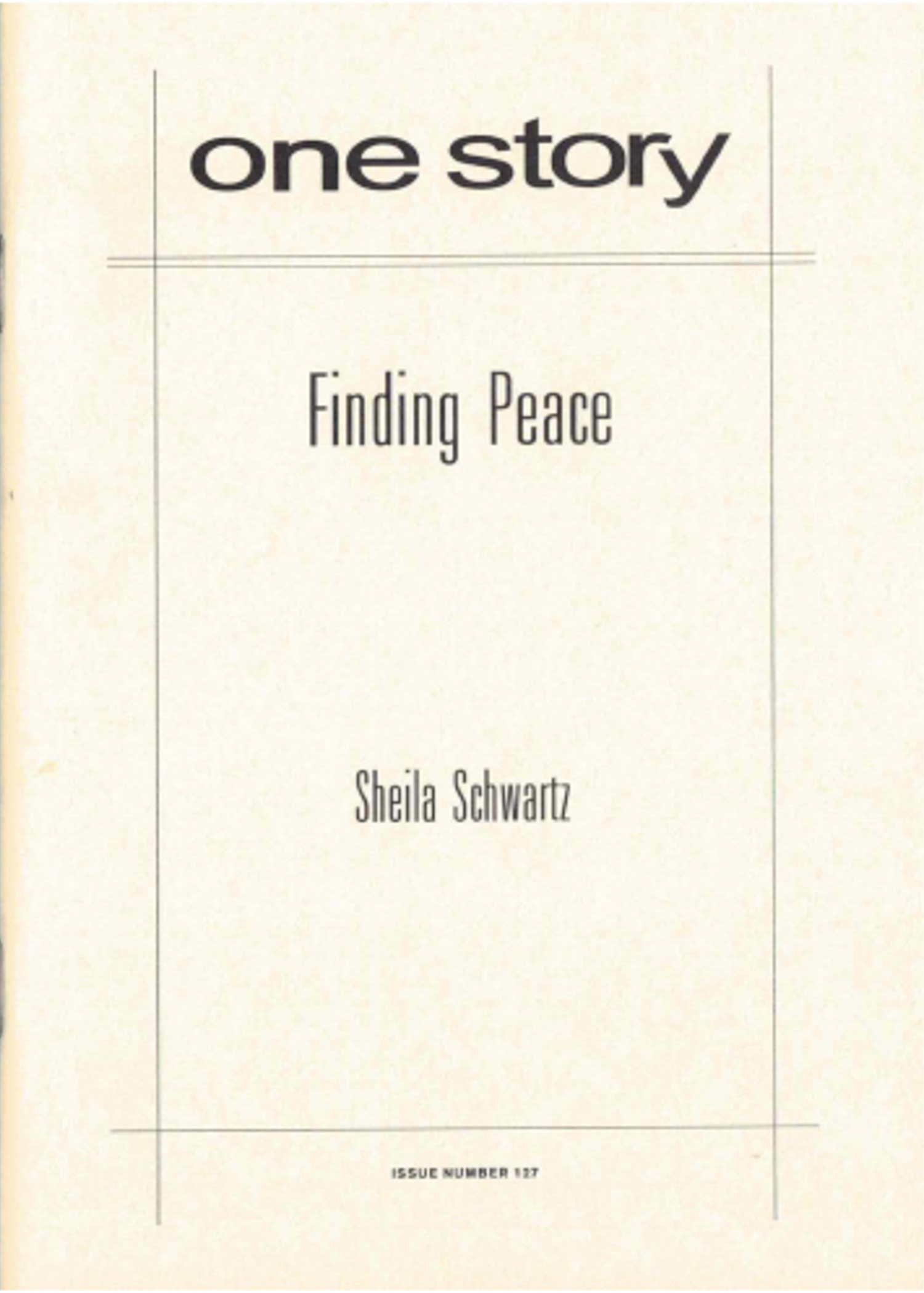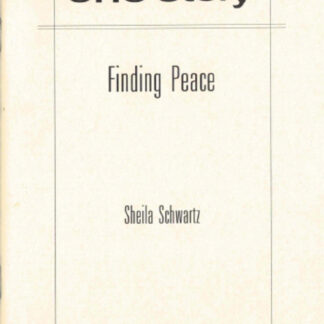
Finding Peace
$2.50
63 in stock
Excerpt
Why am I doing this? Sally asks herself.
A bit too late in the game. She’s already much more than halfway up the final summit of Mt. Everest and still climbing. Too late to be wondering, What on earth do I think I have to prove? Too late to say to Ellikka, their guide, their Fearless Leader (as she likes to call herself), This is crazy, isn’t it? Totally crazy. Could it possibly not be happening? Is it a dream? A hallucination?
There is no right time to say such things to Ellikka. Despite her strange, Nordic name, Ellikka is a big, lanky, former girls’ basketball champion from New Jersey, no European mystique about her at all. She’s rigid with a blank, athletic optimism, and though Sally has already tried repeatedly to tell her, I’m sorry but I realize now I’m not cut out for this. Not everyone can climb every mountain. I don’t want to prove to the world that cancer survivors are tough cookies, Ellikka will have none of it. Ellikka simply repeats what she’s said before, not just to Sally but to the entire Breast Cancer Survivors team in her morning pep talks, “Never say you can’t do it.”
Sheila Schwartz
Sheila Schwartz is the author of the short story collection, Imagine a Great White Light and the novel Lies Will Take You Somewhere. Imagine a Great White Light, published by Pushcart Press in 1991, won Pushcart’s ninth annual Editor’s Book Award and was listed by USA Today as one of the year’s best books. Her work was printed in Pushcart Prize Anthology Volume XIV and such publications as the Atlantic Monthly and Ploughshares. Her story, “After Birth,” was selected for the O. Henry Award Prize Stories in 1999, and she was the recipient of grants from the National Endowment of the Arts and the Ohio Arts Council.
Sheila was born in Philadelphia and graduated from Temple University. She studied Creative Writing at SUNY-Binghamton with John Gardner, and subsequently was awarded a Wallace Stegner fellowship at Stanford University. Schwartz taught at Northwestern, Ohio and Syracuse universities before joining the faculty at Cleveland State University.
Sheila was married to the writer Dan Chaon, with whom she had two sons. She died in 2008, after an eight year battle with ovarian cancer. Shortly before her death, she had completed a new short story collection, In the Infusion Room, from which “Finding Peace” is taken.
Q&A by Hannah Tinti
- HT: What can you tell our readers about “Finding Peace”? Do you know when Sheila first started work on it, or anything about her inspiration?
- SS: Sheila was first diagnosed with ovarian cancer in 2000, and she started the stories that were to become part of In the Infusion Room during that period when she was first coming to terms with the diagnosis. She had surgery and underwent about a year of chemotherapy. She had stage four cancer, which was very bad news, but she managed through with a lot of stoicism and wit and a sharp sense of irony. She got six good years out of the treatments that she endured, and she was able to see our sons through their childhood and into Junior High. During this time she was also able to get a lot of writing done. Her cancer returned in 2006, and when that happened we knew it was more or less a death sentence, though we never spoke of it as such. She continued to work on her writing—on her novel, Lies Will Take You Somewhere, and in particular on In the Infusion Room—up until she passed away in November, 2008. Writing is a way of engaging with the world—a way of grappling, trying to understand what is happening to you. The stories that Sheila wrote while she was sick are incredibly naked. There is no expectation of future glory, no need to mediate. They are urgent, frightened, brutal missives from the land of the dying. And yet...one of the things that I love about the stories is that they are nevertheless so nuanced. So full of humor and compassion.
- HT: The details of this Mt. Everest expedition are so convincing. Did Sheila ever do any mountain climbing?
- SS: Sheila did a lot of research for this story, and spent a lot of time working on it, gathering information. She was particularly influenced by Jon Krakauer’s book, Into Thin Air, and various accounts of George Mallory and Lady Houston and Edmund Hillary and so forth. Those reckless adventurers. Sheila did some mountain climbing when she was young—she particularly remembered a trip to Peru—and she was always an athlete. She loved to swim, and up until the last part of her life she would do laps at the local JCC.
- HT: Do you know how many drafts Sheila did of “Finding Peace,” or how long she worked on it?
- SS: This was a story that she was particularly attached to, and I know that she did a lot of research. She loved reading about Mt. Everest, and about mountain climbing in general. The story went through several drafts, over the course of a couple of years. It was one of her favorites.
- HT: When Ellikka, the pink-ribbon toting, always cheerful guide falls off the mountain in “Finding Peace,” I nearly cheered. It also made me think of your interview with The Rumpus about Sheila—that she wanted to “reclaim the cancer story.” Do you think that was her intention with this piece?
- SS: Cancer Culture is very big on hope and perseverance, and I don’t deny that this is important. But at the same time, the pink ribbon brigade can be overwhelming. As if, somehow, if you succumb, it’s your own fault. You should have tried harder, you should have been more positive, etc. Barbara Ehrenreich also writes about this, quite eloquently, in her new book Bright Sided, which is a book that Sheila would have liked a lot.
- HT: “Finding Peace” is part of a collection, In the Infusion Room. Can you talk a bit about the collection as a whole, and how this story fits into the overlying themes?
- SS: In the Infusion Room is an interconnected set of stories—a kind of Altman movie, if you will. The various characters in the stories— patients and their loved ones and their doctors and nurses—are linked by a particular “infusion room,” that place where you go to get chemotherapy treatments. The book tries to explore the range of experience that radiates out from this one setting, and a number of characters recur through the book. Sally, the star of “Finding Peace” makes appearances as a minor character in several of the other stories, and we glancingly learn about Sally’s ultimate fate in yet another story, in which Sally’s Mount Everest adventure is a news item on the television program that someone is watching. The collection is in many ways a portrayal of the wide net that a single life casts over the world—the ripples we send out, the other lives we touch, even in deepest loneliness. It’s about people who are struggling with the simple fact that we all must face: we are going to die. But it’s also about an even more profound detail that we often forget. The dying do not exist in some mystical, hazy, gold-lit realm. They are still alive—still engaged and participating in all the petty details of living, still watching TV and washing their dishes and snickering at dirty jokes and wondering about the secrets their friends are keeping, still thinking and confused and happy and moody and expectant. Expectant. To me, that is the most complicated and frightening and beautiful idea that the stories of In the Infusion Room leave me with. While our minds are still running, things are never really over. We can’t really escape the habit of existing, the idea that there is a future, the idea that we will continue to move forward in time. Even as it becomes more and more difficult, we are still ourselves in all our grubby, lovely glory—all the way till the last second. Isn’t that the most remarkable thing of all? You are you! You are you! Urgently! And then you stop.
